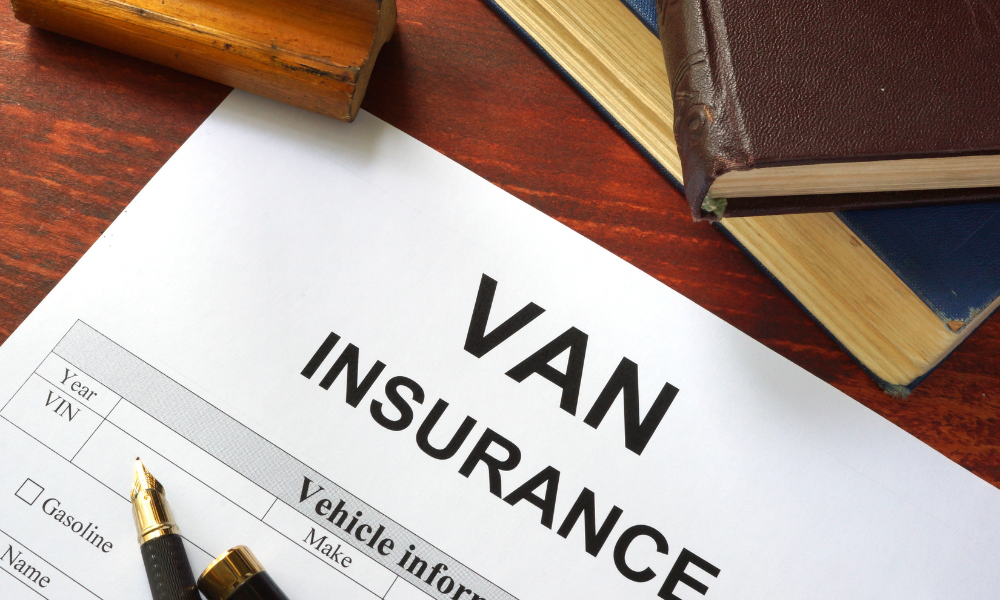Owning a campervan opens up a world of adventure and freedom, allowing you to explore the great outdoors while enjoying the comforts of a home on wheels.
However, not everyone can afford to build or purchase a camper van upfront and may need to seek out financing options to make getting your dream van a reality.
Acquiring financing for camper vans can sometimes be challenging, so we’ve gathered some tips to help you start the process of getting an RV loan, whether you’re building a DIY van conversion or purchasing a Sprinter Van conversion.
Table of Contents

1. Document DIY Builds
Meticulous documentation is essential for a do-it-yourself (DIY) camper van conversion. Lenders often require detailed records of the conversion process, including receipts for materials, proof of workmanship, and any necessary permits or certifications.
Keeping thorough documentation satisfies the lender or bank’s requirements and helps establish the value of your DIY build should you need to refinance or sell in the future. Clear, defined documentation will attract more interested sellers if they can finance your van conversion.
Here are some key aspects to consider when documenting your DIY build:
Capture detailed before and after photos
Start by thoroughly photographing the camper van before and after the conversion. These photos provide visual evidence of the transformation and allow lenders to see the progress made during the conversion process.
Maintain an expense log
Keep a meticulous log of all expenses related to the build. Include receipts for materials, components, appliances, and any professional services you may have hired. Be sure to note the date, description, and cost of each item. This list will demonstrate the investment you’ve made in the build and help establish the value of the converted van.
Create a build journal
A build journal is a valuable resource for documenting the step-by-step process of your DIY conversion. It should include detailed notes, sketches, and diagrams that outline each modification or improvement made to the van. This journal provides a comprehensive overview of the work done, proving the craftsmanship and attention to detail put into the conversion.
Include manuals and specifications
If you have modified any of the van’s systems or installed new appliances, gather and include all relevant manuals and specifications. This documentation demonstrates the quality and functionality of the added components, providing additional assurance to lenders.
Provide testimonials and references
If you’ve collaborated with professionals or sought advice from experienced DIY builders during your conversion, consider collecting testimonials or references from them. These testimonials can vouch for the quality of your workmanship and the integrity of your project.
Showcase energy efficiency and sustainability
If you have incorporated energy-efficient features or sustainable materials, highlight these aspects in your documentation. Emphasize how your conversion contributes to reducing environmental impact and operating costs, as this can be viewed favorably by lenders.
Organize and present documentation professionally
Once you have compiled all the relevant documentation, organize it in a professional and easily accessible format. Create a digital or physical folder containing all the receipts, photographs, journals, permits, and certifications. This way, you can present a comprehensive package to lenders, showcasing your dedication and attention to detail throughout the conversion process.

2. Get Your Camper Van Appraised
To increase your chances of securing favorable financing terms, consider getting your camper van appraised by a reputable appraiser. An appraisal provides an unbiased evaluation of the vehicle’s worth, which can be crucial when negotiating loan terms with lenders.
An appraisal ensures that you and the lender understand the camper van’s value, reducing the risk of overpaying or encountering difficulties during the financing process.
Explore VanX has partnered with a campervan appraisal company that offers reliable appraisal and consulting services. Their services have been verified by a licensed appraiser and authenticated through appraisal systems used by reputable insurance companies and agencies in the auto industry.

3. Purchase from a Reputable Van Builder
Reputable van builders often have relationships with lenders, making the financing process smoother. Moreover, they may offer warranties, after-sales support, and assistance with paperwork, simplifying your overall experience.
Research local van builders, read customer reviews, and consider their reputation and longevity in the industry if you decide to purchase from a van builder.


4. Explore Lenders Specializing in Recreational Vehicles
While traditional banks and credit unions that can provide an auto loan may also offer camper van financing, exploring lenders specializing in recreational vehicles (RVs) is worth exploring. These lenders have a deeper understanding of the RV market and may offer the best RV loan rates that can be tailored to your needs.
They often have expertise in financing van conversions and can guide you through the process smoothly, regardless of whether you’re purchasing a pre-built camper van or converting one yourself.
If you’re looking for an RV loan, our extensive campervan loan directory will help you find a nearby loan provider.

5. Insuring Your Financed Camper Van: What to Consider
When financing a camper van, it’s crucial to protect your investment by obtaining appropriate insurance coverage. Insurance safeguards your vehicle against potential damages or theft and fulfills the lender’s requirements if you have an RV loan on your campervan.
Here are some key considerations to keep in mind when insuring your financed camper van:
- Comprehensive Coverage: Comprehensive coverage protects against various risks, including theft, vandalism, fire, natural disasters, and accidents. It provides peace of mind knowing that you are financially protected in various scenarios that could otherwise result in substantial expenses.
- Liability Coverage: Liability coverage is a mandatory aspect of insurance in most jurisdictions. It protects you in case you cause damage to someone else’s property or cause injury to others in an accident. Ensure that your liability coverage meets the minimum requirements set by your state or country, and consider obtaining higher limits for added protection.
- Collision Coverage: Collision coverage is particularly important if your financed camper van is involved in an accident. Regardless of fault, it helps cover repairs or replacement costs if your vehicle collides with another vehicle or object. While collision coverage may increase your premium, it can save you from significant financial burden in the event of an accident.
- Personal Belongings Coverage: Your camper van is not just a vehicle; it’s also a mobile home. Personal belongings coverage protects the contents of your camper van, such as camping gear, electronics, and personal items. Ensure that the policy includes coverage for your possessions, and consider the value of your belongings when selecting coverage limits.
- Total Loss Coverage: In the unfortunate event of a total loss, where your campervan is severely damaged beyond repair or stolen, total loss coverage (also known as “gap insurance”) can be invaluable. Gap insurance covers the difference between the outstanding loan amount and the actual cash value of the vehicle, ensuring that you’re not left with a significant financial burden if such a situation occurs.
- Consider Deductibles: Deductibles are the amount you agree to pay out of pocket before insurance coverage kicks in. Higher deductibles typically result in lower premium costs, while lower deductibles offer more immediate coverage but may increase premiums. Assess your budget and risk tolerance to determine the deductible amount that suits your needs.
- Shop Around for Quotes: Obtain multiple quotes from reputable insurance companies, comparing coverage options, deductibles, and premiums. Ensure that the policy covers the specific requirements set by your lender and that you understand any limitations or exclusions.
- Notify Lender: When financing a camper van, your lender typically has an interest in the vehicle until the loan is paid off. Always inform your insurance company about the financing arrangement and provide the necessary details about the lender. This ensures that the lender’s name is listed on the policy as an interested party or loss payee, as required by your loan agreement.
- Update Coverage as Needed: As your circumstances change or you modify your camper van, it’s important to keep your insurance coverage current. Inform your insurance provider about any significant changes, such as modifications, upgrades, or changes in usage, to ensure that your policy accurately reflects your needs and adequately protects your investment.

6. Maintain Good Credit
Good credit is a requirement when seeking financing for any significant purchase. Lenders rely on credit scores to assess your financial responsibility and determine interest rates and loan terms. To improve your creditworthiness, pay bills on time, keep credit card balances low, and minimize new credit applications before applying for financing. Regularly review your credit reports to correct any errors or discrepancies that may affect your credit score.
7. Prepare a Solid Financial Plan
Before applying for financing, having a comprehensive financial plan in place is a good idea. Calculate the total cost of the camper van, including purchase price, any additional equipment or modifications, insurance, maintenance, and travel expenses. Determine how much you can afford as a down payment and monthly payment options.
Most banks and credit unions that offer RV loans have a loan calculator you can use to determine what your payment would be based on loan amounts, interest rates, and loan terms.
When evaluating your loan application, lenders will consider your income, debt-to-income ratio, and financial stability.
Explore VanX is Here to Help You Find Your Outside™
Acquiring financing for a camper van doesn’t have to be arduous. Here at Explore VanX, we’ve created the most extensive van life directory to help you with your van life aspirations. Whether you’re looking for RV financing or refinancing, the best deal on an insurance policy for your camper van, or are just pricing out campervans for sale, you can find it here.
Find Your Outside™ on the freedom of the open road and embark on unforgettable adventures in your dream camper van!


